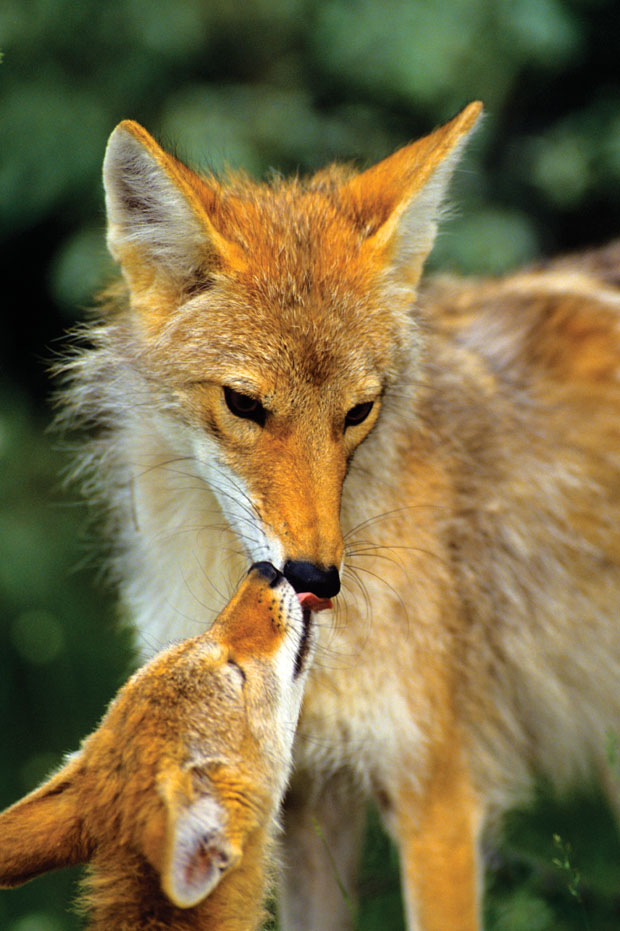This spring, a juvenile female coyote in Great Smoky Mountains National Park repeatedly approached visitors, looking for human food. Rangers eventually had to euthanize the coyote. “We hardly ever deal with nuisance coyotes,” says wildlife biologist Bill Stiver. “They don’t come into our campgrounds and picnic areas as regularly as bears do.”
Although there were no coyotes in the Southeast prior to the 1950s, their presence is now growing quite rapidly. Virginia, for instance, is witnessing a population increase of 29 percent each year. Native to the Midwest, the coyote has migrated east to fill the predator niche of the red wolf and eastern cougar.
Ranging in size from 20 to 50 pounds, coyotes are extremely adaptable and opportunistic. During the winter, a coyote is likely to eat almost entirely meat, while during the summer, meat only makes up about 30 percent of its diet.
In the Southeast, farmers have reported millions of dollars in losses due to coyotes preying on cattle, sheep, and goats. Yet their existence serves important ecological benefits. As top-level predators, coyotes help control populations of rodents, deer, rabbits, geese, and woodchucks.
“We know coyotes are taking deer and small mammals,” says Stiver. “We’ve seen a lot of evidence of coyotes taking feral hogs. So, in some respects, the coyote is our ally, because we have a pretty aggressive wild hog control program here in the park.”
Wild coyotes are also aiding environmental efforts in Fairfax County, Va. They kill Canada geese (which can spread harmful bacteria) and deer. Virginia is one of the top ten states for deer-related automobile accidents; there were 51,000 in 2009.
Still, some livestock farmers would rather do without this top predator. As a result, at least 15 counties in Virginia pay bounties for the killing of coyotes. Bounties range from $25 to $100 per coyote killed.
But wild dogs and hunting dogs pose an even greater threat to their animals than do coyotes, say Aaron Wilson and Anna Bedell, owners of White Oak Dairy Goat Farm. “Coyotes are only going to put in the energy to attack and kill one thing at a time. But dogs will just kill for fun.” In a 2004 report on livestock protection in West Virginia, the USDA concluded that dogs had been “the most significant predator of sheep in Appalachia.”
As the coyote population continues to migrate and expand eastward, both the natural and human landscape will inevitably be changed by the coyote’s presence. “They’re stealthy, crafty, difficult to track, and nearly impossible to eradicate,” says Stiver. “They’re here to stay.”








